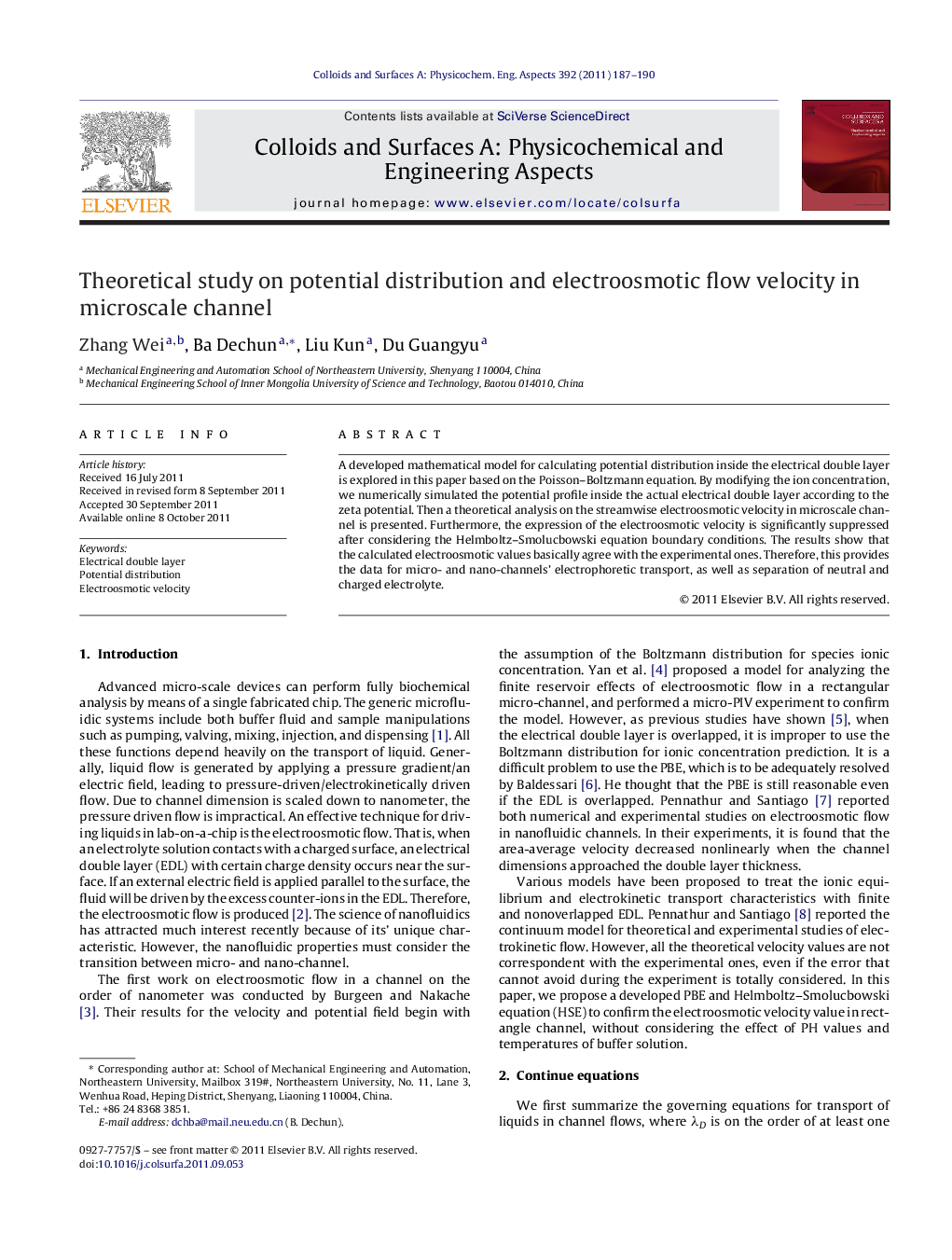| Article ID | Journal | Published Year | Pages | File Type |
|---|---|---|---|---|
| 594391 | Colloids and Surfaces A: Physicochemical and Engineering Aspects | 2011 | 4 Pages |
A developed mathematical model for calculating potential distribution inside the electrical double layer is explored in this paper based on the Poisson–Boltzmann equation. By modifying the ion concentration, we numerically simulated the potential profile inside the actual electrical double layer according to the zeta potential. Then a theoretical analysis on the streamwise electroosmotic velocity in microscale channel is presented. Furthermore, the expression of the electroosmotic velocity is significantly suppressed after considering the Helmboltz–Smolucbowski equation boundary conditions. The results show that the calculated electroosmotic values basically agree with the experimental ones. Therefore, this provides the data for micro- and nano-channels’ electrophoretic transport, as well as separation of neutral and charged electrolyte.
Graphical abstractTransverse potential distribution inside the EDL with different concentrations. The actual thickness is bigger than the EDL. The model also demonstrates that the actual thickness of the EDL in channel depends on not only buffer concentration, but also zeta potential and ion valence.Figure optionsDownload full-size imageDownload as PowerPoint slideHighlights► We model transverse potential distribution inside the actual Debye layer. ► The simulated Debye layer thickness is accordance with experimental data. ► The electroosmotic velocity values can be predicted by calibrated coefficient.
